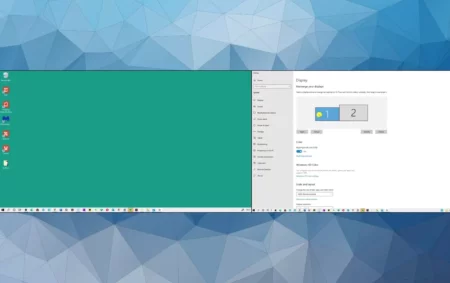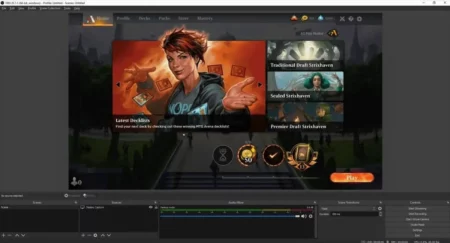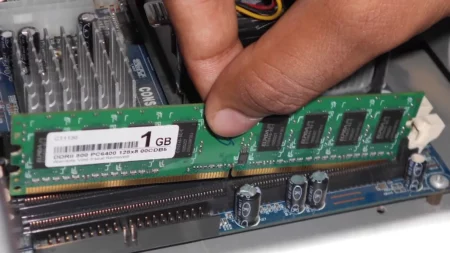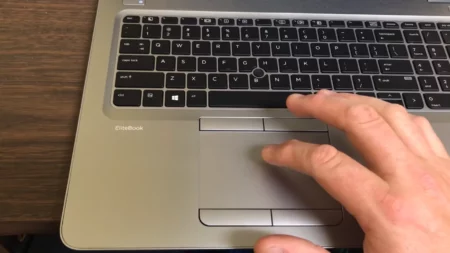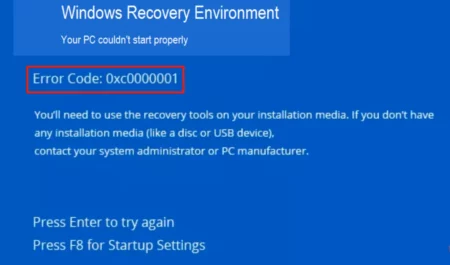If you want to figure out your PC can run Valorant, looking for the Valorant system requirements is the ultimate resort. It only takes a few minutes to read and compare the system specifications like CPU, GPU, VRAM, and RAM against your aims in-game performance. Understanding the system specification can help you plan things in a more organized way and let you analyze whether you have the desired requirements or not.
When choosing the most important parts of your PC for running Valorant, we suggest aiming for a balance between price and performance. While the minimum is a baseline that gets you running the game, we suggest aiming for at least the recommended specs if at all possible because exceeding them will result in an overall smoother experience.
Valorant Gameplay (Attacker & Defender Squad)
Riot Games first-person shooter Valorant is a wildly popular Fortnite, Counter-Strike and Apex Legends hybrid. Well-known for its blazing rounds of explosive combat, this fantastic FPS has millions of players. The traditional Valorant Game starts with two squads of five players each, just like CS:GO.
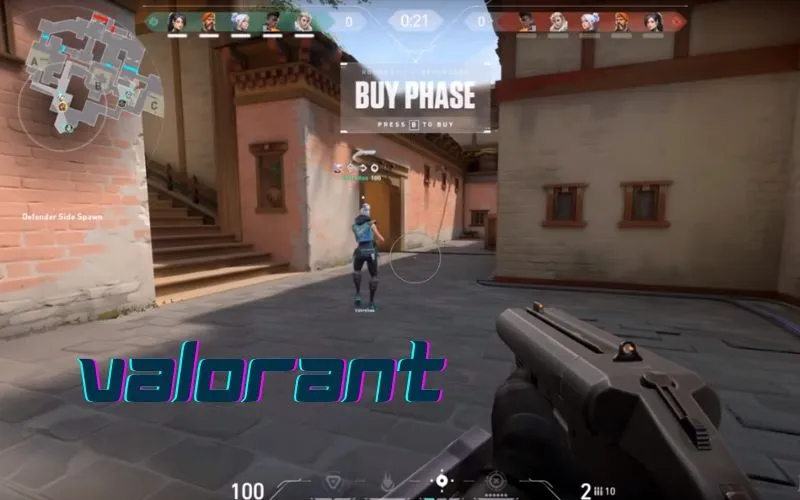
Each squad member has unique abilities to ensure balanced participation in the game. One team is attackers, while the other is defenders. They have opposite missions where attackers have to plant the spike on the given location. Two spike locations are visible on the map.
Defenders need to obstruct the location and prevent the attackers from plating the spikes. The whole effort is a team play; any team performing with coordination and strategy can win and defeat the enemies using their skills.
What Do You Need to Play Valorant?
Valorant is not specs hungry when it comes to the hardware. It requires minimum hardware requirements for smooth gameplay. You only need CPU, GPU, RAM, Storage, OS, Display, a keyboard, and a mouse to play Valorant. You can include DirectX in the list for software compatibility.
Having these things at your disposal enables you to enjoy the game. However, for further lookup about the hardware and software requirements, you need to fulfil the below Valorant system requirement.
Valorant System Requirements (Minimum)
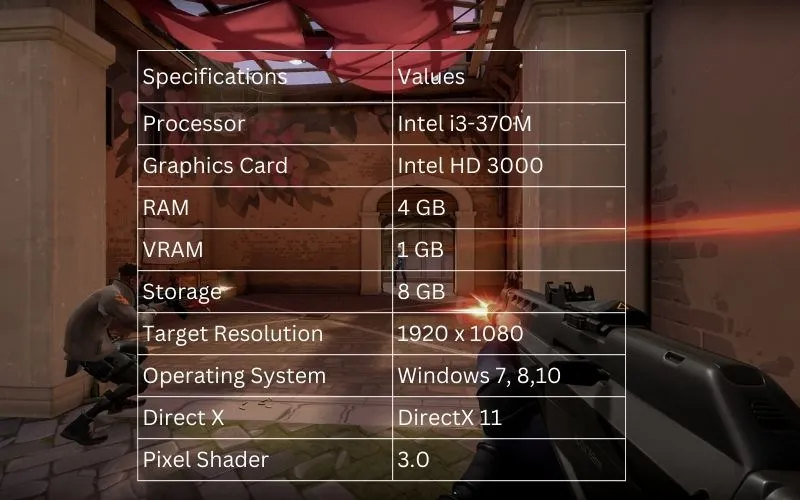
| Specifications | Values |
|---|---|
| Processor | Intel i3-370M |
| Graphics Card | Intel HD 3000 |
| RAM | 4 GB |
| VRAM | 1 GB |
| Storage | 8 GB |
| Target Resolution | 1920 x 1080 |
| Operating System | Windows 7, 8,10 |
| Direct X | DirectX 11 |
| Pixel Shader | 3.0 |
Can I run Valorant? It is the most heated discussion about Valorant on different platforms. Valorant’s got a lot going for it when it comes down to its broad range of systems compatibility. For instance, Valorant can run on Windows 7, and that means you’ll see its visuals right up to 30 frames per second if you make sure the minimum performance requirements are satisfied.
Valorant’s specifications are so low that your system will run this game even if you don’t have enough processing power to load up this web page. The Intel Core i3 370M mentioned is a ten-year-old laptop CPU that lacks the graphics chip necessary to meet the other minimal requirement. However, it still fulfils the Valorant system requirements laptop for minimum gameplay.
Apart from the processor, the graphics card is Intel HD 3000, sufficient to run the game without hiccups on minimum requirements. Overall, it was a good graphics processor for its time but can handle the task easily at 30FPS.
Recommended Valorant System Requirements at 60 FPS
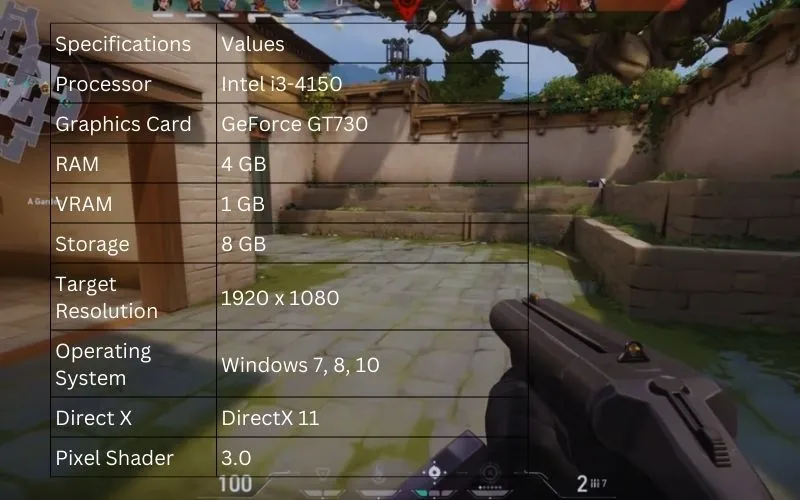
| Specifications | Values |
|---|---|
| Processor | Intel i3-4150 |
| Graphics Card | GeForce GT730 |
| RAM | 4 GB |
| VRAM | 1 GB |
| Storage | 8 GB |
| Target Resolution | 1920 x 1080 |
| Operating System | Windows 7, 8, 10 |
| Direct X | DirectX 11 |
| Pixel Shader | 3.0 |
Given a desktop with an Intel Core i3 4150, you will be able to run the Valorant at 60 FPS. This processor has a dual-core architecture with a four-thread processor. The processing power of 3.5 GHz is sufficient to give all the hardware boost required to run the game without FPS fluctuation on 60 FPS. Anything that comes close to it would suffice for today’s needs.
Graphics requirements are not seriously demanding for the Valorant system requirements. The Nvidia GT730 is an old graphics card but still does the job perfectly. Buying the graphics card is much better than GT 1030 as the asking price is less. There are AMD equivalents that can give you the ultimate performance. For example, RX 550 is a decent choice and performs exceptionally well in these settings.
Recommended Valorant System Requirements at 144+ FPS
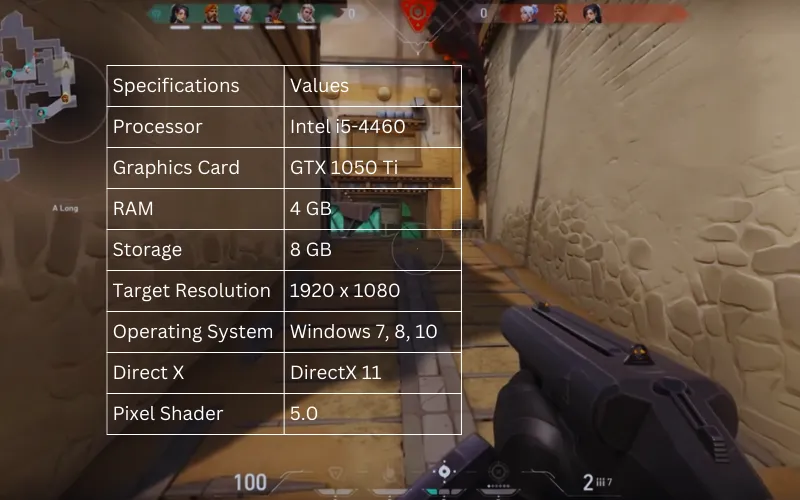
| Specifications | Values |
|---|---|
| Processor | Intel i5-4460 |
| Graphics Card | GTX 1050 Ti |
| RAM | 4 GB |
| Storage | 8 GB |
| Target Resolution | 1920 x 1080 |
| Operating System | Windows 7, 8, 10 |
| Direct X | DirectX 11 |
| Pixel Shader | 5.0 |
For the ultimate gaming experience, you need to enjoy Valorant at high levels, which is why we recommend 144+ FPS. These premium Valorant game system requirements are provided by several parts like the GPU, CPU, RAM, etc. and are a great way for gamers to get access to higher levels of system performance.
Achieving 144FPS on Valorant requires an Intel i5 CPU with quad-core architecture. All you need is the four-thread CPU that requires a faster speed to handle the gameplay. For graphics, Nvidia GTX 1050 Ti is an ultimate recommendation for running the Valorant at 144+ frames per second. You can opt for GeForce GTX 1650 for an almost equal price. However, an alternative like AMD RX 570 is better if you don’t care about the GPU brand.
Valorant Optimal Hardware Specs
Although not demanding in terms of system requirements compared to some of the more graphically-intensive games out there, Valorant still delivers a stunning gaming experience that is fun by even the tiniest fraction.
The game only starts to demand itself as far as system specifications go if one wishes to bring out their highest frame rates. Still, even then, it’s nothing anyone would have a hard time working with or upgrading in terms of buying new hardware to be able to play it.
With minimum Valorant system requirements size, you can aim for 720p at 30 fps. It only requires low end integrated graphics cards like Intel HD 3000. However, the recommended Valorant system requirements need at least GeForce GT730. The aim is to click 1080p with 60 fps.
If you are looking for professional advice, we recommend using these Valorant system requirements. An i5-3470 CPU with Nvidia GTX 960 GPU and DDR3 RAM combo is enough to provide 120 fps at 1080p resolution. You can use our Valorant system requirements maximum for optimum gameplay.
Valorant is not space-hungry when it comes to hard disk space. Unlike modern games, it requires much less free space for installation and game files. If we analyze Valorant system requirements storage, 8 GB of free space is enough to handle the game files.
For the most part, Valorant is a CPU based on gameplay. It needs a decent CPU to run the gameplay without any hiccups. However, we cannot rule out the part of GPU as it is also a requirement for running the game smoothly, especially when you need higher graphics and smooth performance.
No, Valorant requires a graphics card for handling the graphics. However, the graphics card for Valorant does not require to be high end. Valorant min specs can work on integrated Intel HD graphics while higher resolution and FPS needs at least GTX 960 or above for a stable performance. You can even work out the Valorant system requirements AMD based GPUs.
Valorant is predominantly a single core game which more reliance on the CPUs single-core performance. It does require multiple CPU cores to handle the load when running at intense settings. However, the single-core dependency is more dominant than multiple cores in gameplay.
